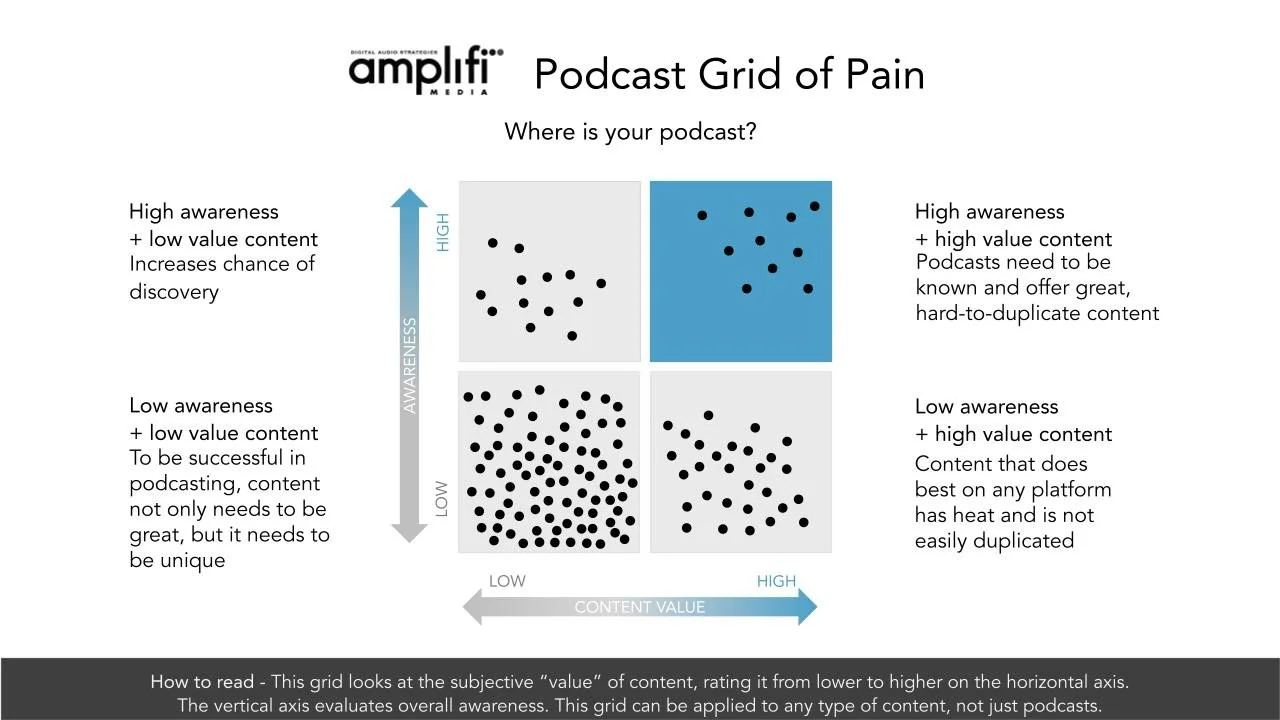The Great Content Flood — And Why Mediocre Doesn’t Stand a Chance
Not so long ago, creating content gave you an edge. In a monoculture world, if you landed a radio show, secured a TV slot, built a podcast studio, or even just started a Twitter account (pre-X), you had scarcity on your side.
Today, we’re living through the greatest explosion of content in human history. The barrier to entry has collapsed. Every day brings more podcasts, YouTube videos, TikToks, Substacks, and now, generative AI–produced shows.
The dam has burst. Anyone with a phone… or a prompt… can publish.
AI is about to pour rocket fuel on the already relentless stream of content hitting our feeds, accelerating output but not necessarily audience demand.
While AI podcasts are apparently a thing, this isn’t just about podcasts. YouTube is being flooded with AI generated content. Open AI’s Sora2 keeps getting better. A recent analysis estimated that over half of long-form english-language posts on LinkedIn are AI-generated.
We’re staring down a content tidal wave of unimaginable scale.
But here’s the thing: volume doesn’t equal value.
More isn’t better if no one cares.
Whether machine- or human-made, low-value content has never faded faster. Listeners and viewers sample quickly, swipe ruthlessly, and move on without hesitation. This behavior happens everywhere. From YouTube, Netflix, and TikTok to Spotify and Apple Podcasts, most media are seeing declines in attention and time-spent.
Mediocre content doesn’t stand a chance.
So, what does it take for your podcast to break through and grow audience?
You need to provide value. Start by asking if what you’re making deserves your audience’s attention. This is Amplifi Media’s Podcast Grid of Pain. It’s a matrix we use with our clients that compares the effort required vs. the probability of success.
© Amplifi Media
Where does your show/content fall on the grid?
Most podcasts are in the bottom left-square with low value and awareness. Chat-casts, minimal-prep interviews, and “just talk for 40 minutes” shows reside in this ‘highest pain and lowest reward’ corner. AI will saturate the quadrant further.
To land in the coveted upper right, you need content with high value and awareness.
Content in the upper-right stands out, earns trust, and keeps audiences coming back.
Why HVC Wins
HVC has one job: be worth someone’s time.
That requires:
• A strong concept with a clear audience in mind
• A differentiated voice or point of view
• Craft, editing, structure, pacing, storytelling
• A reason to return
And yes, this applies to AI too. AI-generated content will saturate every platform, but the same Darwinian rules apply. If it’s not HVC, it will disappear into the scroll.
Algorithms don’t prioritize volume
Many creators assume more output will lead to more success. It’s a common belief: post frequently, publish everything, clip every moment, and the algorithm will reward the effort.
We know of several media companies that have given employees daily posting edicts.
But algorithms don’t prioritize volume. They respond to performance.
When low-value content gets ignored, it signals weak engagement and trains the algorithm to show your work to less people.
More is not better when it’s mediocre.
In fact, it often means less reach.
It’s OK That Most Podcasts Perish
This may sound harsh, but it’s actually liberating.
According to Podcast Industry Insights (Daniel J. Lewis), using Apple Podcasts data, 85% of podcasts have been inactive for 90+ days. That number has barely moved in years.
It’s brutal but, most podcasts don’t make it. Not because creators aren’t trying, but because producing consistently great content that resonates with an audience is hard.
Just like TV pilots, YouTube channels, newsletters, albums, and blogs, most creative projects won’t last. It’s how the process works.
Content requires experimentation. Some ideas stick, others don’t. And that’s healthy. Shows need a clear benefit, an understanding of their audience, and creative rigor. Many podcasters underestimated the commitment. Others lost traction. Many discovered that their idea wasn’t differentiated enough to survive.
This isn’t a flaw of the medium — it’s a feature of a changing ecosystem.
Make Fewer Things. Make Better Things.
The uncomfortable truth?
The easier it is to make content, the harder it is to stand out.
The bar has moved. It’s no longer: “Can you make content?”
Now it’s: “Can you deliver High-Value Content (HVC) that punches through?”
Tools will keep lowering the barrier to entry.
The mandate is clear:
Be intentional. Be excellent.
Make fewer things. Make better things.
Mediocre is being crushed. The future belongs to creators and brands who deliver unique high value content.
We hear about our content forwarded to many media executives and producers. We thank you for that. If The Thought Letter was forwarded to you, please take a moment and get your own free copy here.

